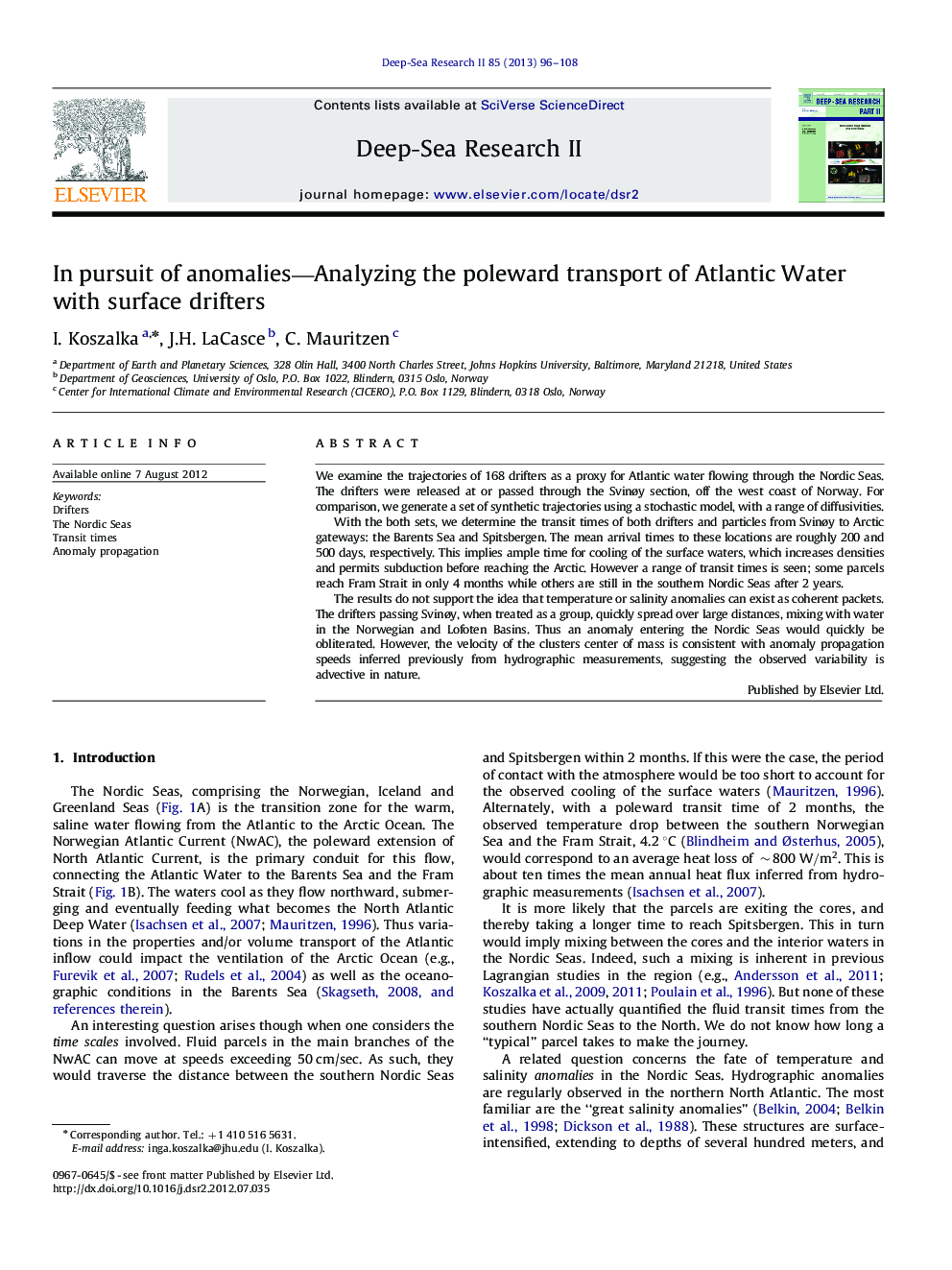| Article ID | Journal | Published Year | Pages | File Type |
|---|---|---|---|---|
| 4536679 | Deep Sea Research Part II: Topical Studies in Oceanography | 2013 | 13 Pages |
We examine the trajectories of 168 drifters as a proxy for Atlantic water flowing through the Nordic Seas. The drifters were released at or passed through the Svinøy section, off the west coast of Norway. For comparison, we generate a set of synthetic trajectories using a stochastic model, with a range of diffusivities.With the both sets, we determine the transit times of both drifters and particles from Svinøy to Arctic gateways: the Barents Sea and Spitsbergen. The mean arrival times to these locations are roughly 200 and 500 days, respectively. This implies ample time for cooling of the surface waters, which increases densities and permits subduction before reaching the Arctic. However a range of transit times is seen; some parcels reach Fram Strait in only 4 months while others are still in the southern Nordic Seas after 2 years.The results do not support the idea that temperature or salinity anomalies can exist as coherent packets. The drifters passing Svinøy, when treated as a group, quickly spread over large distances, mixing with water in the Norwegian and Lofoten Basins. Thus an anomaly entering the Nordic Seas would quickly be obliterated. However, the velocity of the clusters center of mass is consistent with anomaly propagation speeds inferred previously from hydrographic measurements, suggesting the observed variability is advective in nature.
